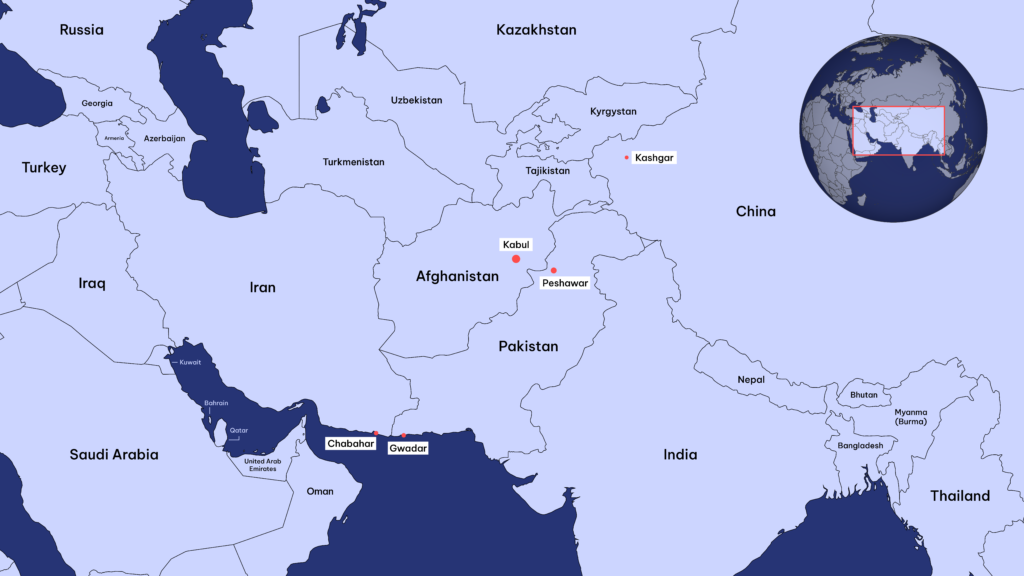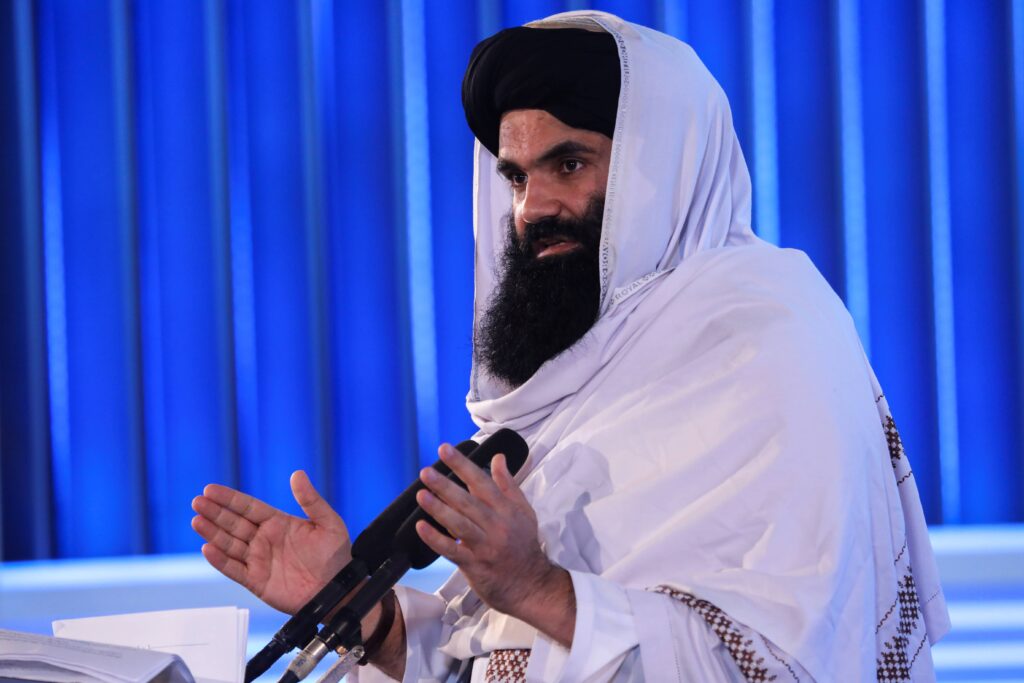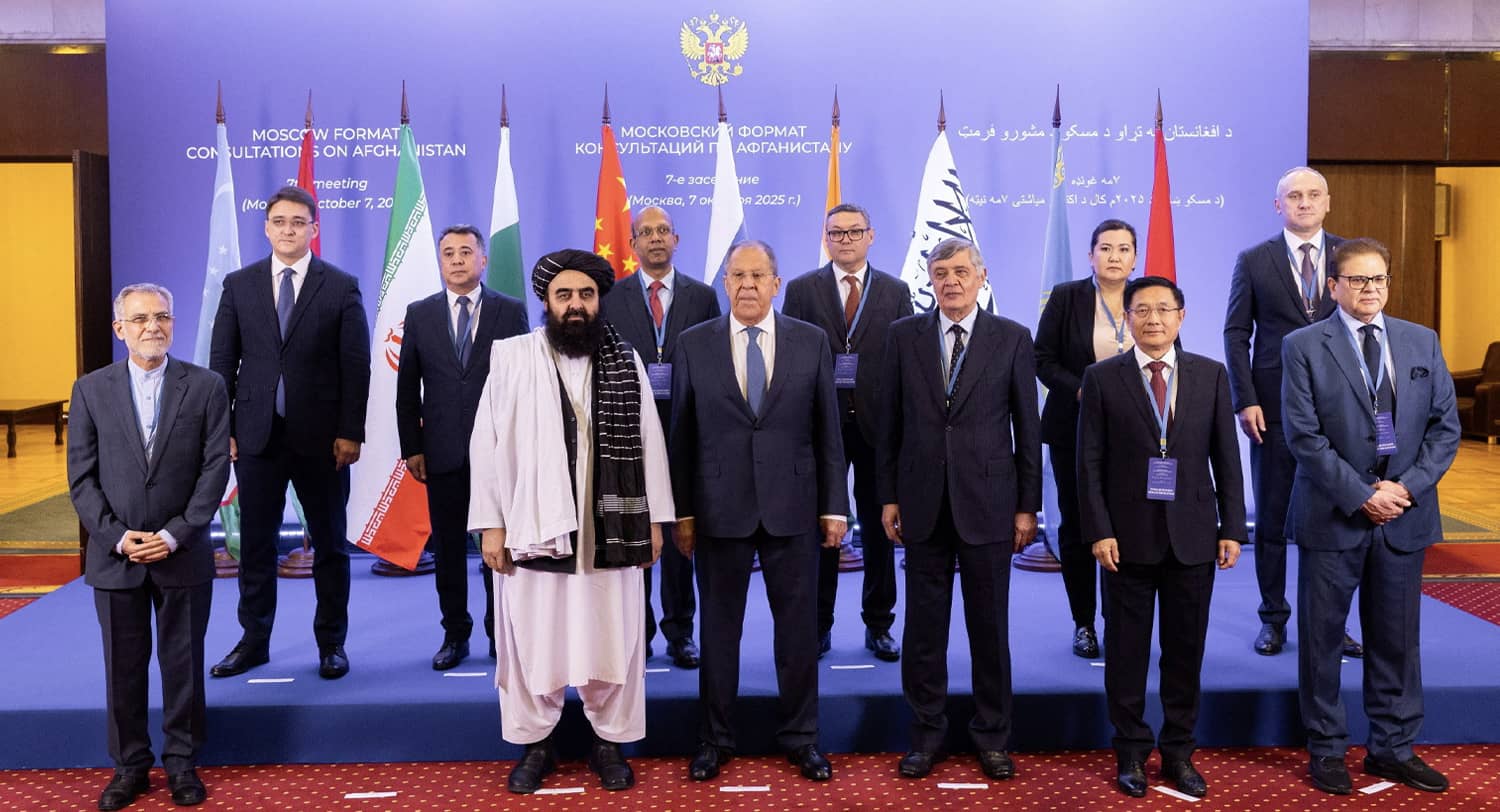Four years have passed since the United States withdrew in chaos from Afghanistan, abandoning important projects, leaving behind billions of dollars of equipment and handing the Taliban many other assets in that country.
The Taliban still rule Afghanistan. They face a mountain of unresolved problems yet are ready to employ as much force as necessary to contain them. An exhausted and in some respects relieved population struggles to go about its business. No external power or group, including the thousands of educated Afghans abroad, possess any realistic projects to overthrow the Taliban regime.
Many countries have serious, ongoing concerns with the regime’s human rights record in general and women’s rights in particular. At a conference on Afghanistan held in Tashkent in July 2022, officials from both China and Russia joined counterparts from Europe, America, and dozens of other countries in declaring that their governments would withhold recognition until the situation had improved. Yet in the past three years, most of these countries have received informal envoys and chargés d’affaires from Kabul. Some are also now exchanging ambassadors with Kabul.
Meanwhile, Islamic terrorist groups are once again operating on the territory of Afghanistan. It is possible but unlikely that training camps for suicide bombers in the remote mountains of Badakhshan somehow escaped the notice of the Taliban rulers or are beyond their ability to suppress them. However, the fact that mid-level al-Qa’ida operatives are living in Kabul itself confirms that the new authorities either passively or actively support their presence. Afghanistan-based extremists are once again operating in parts of Tajikistan; ISIS recruited Tajiks from both sides of the border to carry out the bombing of the Crocus City entertainment complex in Moscow on March 24, 2024, killing 140 people.
In reviewing US options in Afghanistan, let’s begin by taking stock of what other countries are doing there.
China and Russia
Washington views China as the most eager aspiring hegemon in Afghanistan. Beijing had long worked to prevent Afghanistan-based Islamists from supporting Uyghur separatists in its province of Xinjiang and had provided aid, trade, and investments to Kabul during Hamid Karzai’s presidency. Now, in addition to reviving its old contracts and projects, it is also eager to connect Afghanistan’s long projected internal transport network with its Belt and Road initiative (discussed in the Pakistan section below).
China, which already had bought rights to Afghanistan’s huge copper deposits at Mes Aynak, seeks other resources and especially rare earth minerals. Meanwhile, the Chinese Khawar Construction Company contracted to revive the former regime’s vast Kabul New City project, planned as a modern metropolis adjoining ancient Kabul.
In the summer of 2025, Beijing hosted a meeting with Afghanistan and Pakistan. In addition to transport issues, the session helped resolve the border issues between Afghanistan and Pakistan. A crisis had erupted with Pakistan’s forced repatriation of hundreds of thousands of Afghan refugees to Afghanistan. An armed conflict had also occurred on the Afghan border over a deadly incursion into Pakistan by Afghan Taliban fighters in support of their kindred group, the Tehrik-i-Taliban Pakistan. This session refurbished ties between Kabul and Islamabad and affirmed Beijing’s role as peacemaker.
Russia is still smarting over the Soviet Union’s failed invasion and occupation of Afghanistan from 1979 to1989 and remains eager to reclaim its place at the table in Kabul. Having already built an impressive Russian Cultural Center in the heart of Kabul during Ashraf Ghani’s presidency, it was one of the few countries to keep open its embassy after the Taliban takeover. It has provided 1280 tons of flour to Afghanistan’s northern provinces and opened its doors to some 80,000 unemployed Afghan workers. Meanwhile, Russia‘s NTC Protei Company contracted with the Taliban government to install 4H telecommunication systems in four Afghan provinces. In July 2025, Russia became the first country to extend formal recognition to the Taliban government.
Moscow now seeks to reassert its presence across the entire region to its south, beginning with the five former Soviet republics in Central Asia and the three former Soviet states of the Caucasus. It views Afghanistan as an integral part of the road and rail network it seeks to build from its southern border clear to the Gulf of Oman at the Iranian port of Chabahar. During the pro-American government in Kabul, Russia’s trunk route deliberately skirted Afghanistan but now, like China, it is eager to incorporate Afghanistan into its north-south network.
Russia would like to incorporate Afghanistan into its Eurasian Economic Union, just as China would like to bring it into its Shanghai Cooperation Organization, which already includes Pakistan, Iran, and the Central Asian states.
Pakistan, India, Turkey and the Arab Gulf States
Afghanistan has long-term cultural affinities with Pakistan, India, Turkey, and the Gulf states.
Pakistan’s goals range beyond border-related issues (discussed above). Its paramount concern is to prevent Pashtuns in Afghanistan from using Pashtuns in Pakistan to destabilize the country. A second goal is to support a new railroad line from Peshawar to Kabul to link with the Chinese railroad line from Kashgar, thus connecting China by rail to Pakistan’s proposed new Indian Ocean port at Gwadar, which China is also funding and building. Islamabad sees Gwadar as in competition with Iran’s expanding port at Chabahar. No wonder, then, that delegations have bustled back and forth between Islamabad and Kabul to deliberate on this project.

Iran maintains close links with Afghanistan’s Hazara ethnic minority, with whom it shares the Shi’ite faith. The official languages of Iran and Afghanistan, Farsi and Dari, are so close as to obviate the need for interpreters. Iran also has an interest in the welfare of their ethnic cousins, Afghanistan’s ethnic Tajiks, who for centuries dominated the government in Kabul. When the US fled from Kabul, Tehran kept open its embassy in the hope that Tajiks would not be marginalized under Taliban rule. Meanwhile, a host of Iranian businessmen flocked to the western Afghan city of Herat, which they now use as a base for expanding their enterprises to the rest of Afghanistan.
Several factors constrain Iranian influence in Afghanistan. The largest ethnic group in Afghanistan, the Pashtuns, dominate the Taliban government, leaving the Persianate Tajiks, with only 27 percent of the population, as junior partners at best. Both the Pashtun and Afghan Tajiks are Sunni. Iran’s war with Israel crippled its economy, forcing it to send half a million Afghan refugees back home, which the Taliban view as a hostile act. A rapid improvement in this relationship is not anticipated.
India, by contrast, while long opposed to the Taliban, has opened a budding relationship with Afghanistan’s new rulers. Brushing aside human rights issues, it boldly reopened its Kabul embassy in 2022. India has expanded its humanitarian aid and medical assistance to Afghanistan, with Indians helping with its distribution. Mindful of the three billion dollars of Indian investment in the port at Chabahar, India’s foreign secretary Vikhram Misri met with Afghanistan’s foreign minister pro tem Amir Khan Muttaqi in January 2025. Misri stressed India’s continuing support for Iran’s port of Chabahar, as opposed to the aspiring Pakistani-Chinese project at Gwadar. India’s emerging ties with Afghanistan might be seen as an extension of its broader conflict with Pakistan.
Turkey was among the first to call for the recognition of the Taliban government, though it followed ten other countries in establishing relations. The Turkish Red Crescent, the Turkish government’s Disaster and Emergency Management Authority, and diverse Turkish NGOs all provide humanitarian aid. Meanwhile, a Turkish firm with strong government backing rushed to restore the generating capacity of the important Kajaki hydroelectric dam in the Pashtun heartland of Helmand province.
Ankara has three goals in Afghanistan: first, to check the large and destabilizing flow of Afghan immigrants to Turkey; second, to reopen Afghanistan to Turkish firms; and third and most important, to absorb Afghanistan into its Turkic world strategy. As announced in President Erdoğan’s “Vision 2040,” Turkey aims to link all Turkic-speaking states of Central Asia and the Caucasus in a single regional “Organization of Turkic States” under Ankara’s umbrella, integrating businesses, media, and security organs. Though Turkey is reopening Turkish language schools in Afghanistan, the total number of speakers of any Turkic language there does not exceed one eighth of the population. Thus, either Erdoğan will have to soften the ethno-linguistic definition of his project in order to include Afghanistan (and Tajikstan as well).
Finally, the six Gulf Arab states have cautiously opened their doors to the new Taliban government by providing food, medical aid, and other forms of humanitarian assistance. Qatar’s role in the Afghan-US negotiations in 2019-2021 positioned it to take an active role in assisting Kabul’s new government. The United Emirates established an air bridge to deliver aid, while Abu Dhabi’s GAAC Holdings signed a contract to manage Afghanistan’s main international airports. Formal Gulf state recognition of the Taliban government has been slow in coming, but investors help fund infrastructure and other projects in Afghanistan.
The Central Asians
Three Central Asian peoples have co-nationals living in Afghanistan. Tajiks number one quarter of Afghanistan’s population, Uzbeks account for six percent and Turkmen three percent, together more than a third of Afghanistan’s population. Since most of these minorities are concentrated in Afghanistan’s relatively developed north, they enjoy a somewhat magnified economic and political influence in the country. Family and commercial links across the border are constant and intense.
Afghanistan’s Islamic extremists have posed a series of security threats to Central Asian states, including involvement in Tajikistan’s civil war in the 1990s, and support for an uprising in the Uzbek city of Andijan and an attempt on the life of Uzbekistan’s president.
But Central Asia’s leaders also see Afghanistan as their single most important and undeveloped economic opportunity. Throughout the ages, Central Asia’s most significant and uninterrupted trade was with what are today Pakistan and India. This corridor, called The Great India Road, rivaled the so-called Silk Road between Europe and China and far surpassed it in cultural and religious impact. Though rarely interrupted by invasions or wars in medieval and early modern times, tsarist Russia and then the USSR closed it tight, forcing Central Asians to trade only through their northern neighbor. Now their highest priority is to reopen this corridor, which they seek to do by building road, railroad, and telecommunication systems by the shortest route available, i.e., through Afghanistan.
Largely neglected in Washington, Central Asia’s corridor project through Afghanistan is making solid progress. Uzbekistan and Kazakhstan both expect to conduct three billion dollars-worth of trade with Taliban-ruled Afghanistan by the end of 2025 and both countries are working with Kabul to complete the planning and financing of the proposed new railroad lines. Several countries with which Washington maintains or seeks positive relations will benefit from expanded trade across Afghanistan, including India, Turkey, the Gulf states, and Japan, and would welcome US efforts to advance it.
As realists, the Central Asians know this corridor requires the consent of China and Russia, which control the routes leading to the southern ports that now skirt Afghanistan on both sides and to which new Afghan lines must be connected. Beyond Afghanistan, sections of the railroads leading to these ports in both Pakistan and Iran are beset by grave problems, namely, an armed separatist movement in Pakistan’s Balochistan province and serious technical bottlenecks in Iran. However, Central Asian states see this project as allowing them more independence from Russia while creating a more internally coordinated trading region.
The World Bank and Asian Development Bank had earlier supported these initiatives but both are withholding support until the Taliban government gains international legitimacy. Even though the United Nations remains engaged with Afghanistan and provides international assistance there, it has suspended the Taliban government’s voting rights. In July 2025,the General Assembly overwhelmingly adopted a resolution expressing concern over what its members consider the further erosion of human rights there.
Today the relatively stable countries of Central Asia stand in sharp contrast not only to Afghanistan, Pakistan and Iran but also to both Russia and China, both of which today face destabilizing domestic international and domestic challenges. The “arc of instability” that Zbigniew Brzezinski saw in Central Asia in the late 1970s has vanished and shifted instead to its powerful neighbors, a reality that Washington would ignore at its peril.

Leadership in Kabul: A Wild Card
There is an unacknowledged duel between the grim and reclusive fifty-eight year old leader of the Taliban faithful, Haibatullah Akhundzada, who works from his base in the impoverished southern city of Kandahar, and the more accessible forty-six year old Minister of Internal Affairs and de facto national leader, Sirajuddin Haqqani, who resides in relatively modern Kabul.
Washington is well aware of Haqqani’s sinister past. As heir to the leadership of the Haqqani terrorist network he organized a heavily armed attack in 2008 on the Serena Hotel in Kabul, which killed eight people, including an American. Built by the Aga Khan, imam of the moderate Ismaili sect, the hotel was a natural target for extremists. Haqqani also tried to assassinate former Afghan president Hamid Karzi. The US government offered a ten-million dollar bounty for his death or capture, but in a conciliatory move Washington lifted the bounty in 2025.
Nowadays Minister Haqqani eagerly engages in interviews with American and other international reporters and foreign leaders, promotes economic development, and confidently declares that in time there will be progress on women’s education and employment. In several of these interviews he has professed to seek good relations with the United States and all other Western countries.
One cannot predict how this face-off will be resolved, but the odds-on favorite is Haqqani. In a recent sermon Akhundzada railed against worldliness and tensions between Afghan citizens and their government, which many see as an indication that his influence is waning.
The United States
During the Biden administration, the US maintained a diplomatic boycott of the Taliban regime. The US either ended or suspended support for infrastructure projects such as Turkmenistan’s 1100 mile-long TAPI gas pipeline across Afghanistan to Pakistan and India, the World Bank’s project to transmit electricity from Kyrgyzstan to Pakistan via Afghanistan, and the trans-Afghan transportation corridor that Washington itself had initiated. The US has frozen seven billion dollars in Afghan assets held by a New York bank, which the Kabul government wants returned.
US humanitarian aid to Afghanistan continued during the Biden administration. In addition, an estimated 12,000 to 15,000 Afghans entered the US illegally but the Taliban have refused to accept their return.
Early in his second term, President Trump ordered an almost complete cessation of American support for humanitarian assistance to Afghanistan, including funds for the World Food Program. Also, the temporary protected status of thousands of Afghan emigres in the United States was cancelled.
Then, Trump sent former US envoy for Afghanistan Zalmay Khalilzad, along with Adam Boehler, the US Special Representative for Hostage Affairs, to Kabul to meet with acting Foreign Minister Amir Khan Muttaqi about the release of detailed American citizens. The Taliban’s official spokesman declared that the discussions had opened a path to further positive interaction. President Trump has also recently asked the Taliban to allow the US to reclaim a presence at the Bagram airfield, which his predecessor abandoned in 2021, though that appears unlikely.
Whether the United States remains disengaged from today’s Afghanistan or instead chooses some level of gradual involvement will have serious implications that extend far beyond that country’s borders. Engagement might strengthen the possibility of the Islamic Emirate evolving over time into a less tyrannical entity. Engagement might also support discrete efforts of the other countries of Greater Central Asia to link arms in some kind of alliance that protects their individual sovereignties and keeps them open to America and allied countries.
The former states of Soviet Central Asia long suffered from a double isolation, first from each other and second from access to southbound routes that are essential if their polities and economies are to escape from the continuing pressures from Russia. Central Asia remains the least integrated and most isolated world region. The extent and character of America’s future engagement with Afghanistan will directly impact this important project on Russia’s and China’s borders.
The entire region, including Afghanistan, wants to expand links to the economies of India and southeast Asia and hence diversify their commercial and cultural relations in a manner that will expand their freedom of action and undergird their sovereignty. If that expansion only occurs in a manner that meets the geopolitical demands of Russia or China, Washington could face the prospect of a vast belt of closed economies and authoritarian societies extending from China’s border with South Korea clear to the Persian Gulf.
Washington should consider a more active approach to Afghanistan. Economic disengagement comes at a cost. A study by the U.S. Geological Survey of Afghanistan’s copper, gold, cobalt, lithium and rare earth minerals estimated their total value at one trillion dollars. The China Metallurgical Group Corporation is activating its three billion dollar investment in the Mes Aynak copper deposit, one hour’s drive southeast of Kabul, and other megaprojects are in planning.
Here are two steps that Washington could undertake to gradually engage Afghanistan. First, open regular communication with the five Central Asian states on Afghan affairs generally, including economics, human rights, politics, social conditions, and prospects for trans-Afghan transport. Washington should approach this not as a back-door path to extending diplomatic recognition to Kabul but as a means of gaining insights beyond those provided by its own intelligence agencies, which have often fallen short in their analyses of Afghan affairs.
Second, continue direct dialogue with Kabul and expand the agenda to include investors’ rights and trans-Afghan transport. Simultaneously open discussion with relevant American and foreign banks, international financial institutions and foreign governments regarding the financing of trans-Afghan transport.
As the US shifts resources to engagement in Asia, policy makers should not neglect Central Asia. Former National Security Advisor Zbigniew Brzezinski and Defense Secretary Donald Rumsfeld disagreed on many issues. But they were both convinced that the fate of what we might call Greater Central Asia, of which Afghanistan is a part, would be of significant strategic concern to the United States. Active but prudent strategic engagement offers a responsible path forward.



